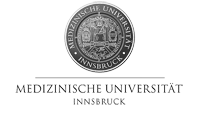|
|
 |
2Department of Biology, Biotechnical Faculty, University of Ljubljana, Slovenia
Objective: To describe clinical and molecular characteristics of Slovenian patients with chronic granulomatous disease (CGD) and to examine the relationship of clinical presentation with the genotype.
Methods: Clinical data and laboratory values were retrospectively collected from the medical records of 9 patients diagnosed with CGD at the University Children's Hospital Ljubljana. Thirteen exons and the exon/intron boundaries of the CYBB gene were individually PCR amplified, directly sequenced using the Big Dye terminator cycle sequencing kit and ABI PRISM 310 automated sequencer (PE Applied Biosystems, Norwalk, USA) and compared to the normal CYBB gene sequence. The novel mutations were identified and named starting numbering from AUG codon (Gene Bank Access No. AF469757). A provisional structural model of the mutated proteins of the gp91 enzyme system was built initially using a novel automatic modeling method based on distance-matrix projection and then refined using energy minimization with appropriate side-chain torsional constraints.
Results: Nine CGD patients (all boys) from seven unrelated families were identified. The relative frequencies of different types of infections were Aspergillus sp. (86%), Staphylococcus aureus (57%), Salmonella sp. (57%), Candida albicans (43%), Streptococcus sp. (43%), Serratia marcescens (14%), Burkholderia cepacia (14%), Proteus sp. (14%), Pneumocystis carinii (14%) and Haemophilus influenzae (14%). Seven out of nine patients had mutation in the CYBB gene and the types of mutations were: 1038 del T, 1598 del GAG*, 217 C>T, 882 C>T, IVS1+1G>A* and 197 T>C* (* - novel mutations). The function of affected gene product was investigated based on a synthesis of previous reports and findings in our patients.
Conclusions: The type of infections present in CGD patients from Slovenia were similar to prior reports, however, our patients had higher frequency of infections with Aspergillus species. Seven out of nine patients had mutation in the CYBB gene and three of them were novel. No correlation existed between the type of mutation and the clinical phenotype of the disease.
